-
Posts
120 -
Joined
-
Last visited
Content Type
Forums
Blogs
Events
Downloads
Gallery
Membership & Shop
Posts posted by Jason C
-
-
Hi Roger,
Overdrive sounds fantastic, an exciting improvement to the driving experience. Driving through the forrest in a TR4A sounds magic!
best,
Jason
-
10 hours ago, RobPearce said:
Thanks Sam, sorry by 5/16" bore – some of the Vitesse fuel line a different dimension?
Thanks @RobPearce yes, my Mk1 Vitesse fuel pipe is 1/4" inch all the way.
-
10 minutes ago, yorkshire_spam said:
Sorry @Jason C I don't honestly know - my experience is Dolomite and Spitfire based. IIRC on the Spitfire between the tank and the long fixed pipe along the chassis is a short section of 5/16" bore and everything at the front end is 1/4". OTOH pretty much all of the pipes are 5/16" bore on the Dolomite (1850).
Thanks @yorkshire_spam, appreciate your help. I look to be set with the brand of fuel hose. Fingers crossed someone knows how to route the pipe work.
-
14 minutes ago, yorkshire_spam said:
I'm using the carb variety and it's true 1/4" and 5/16" bore, so never had any issues with fit on the pipework (provided appropriate clips are used)
Thanks Sam, sorry by 5/16" bore – some of the Vitesse fuel line a different dimension? Did you use stainless hose clamps?
-
I too am a OD virgin, this thread makes for great reading. In the future I would like to fit an OD to my Vitesse, namely for a fifth gear cruising on the open road. I like the idea of the OD with the stalk switch, but wonder “what if I leave OD engaged” – does the driver know it’s engaged by the feel, and or the rev counter? Thought a light on the dash may have been useful, but as I haven’t driven an OD before, what do I know, would be great to hear peoples thoughts...
Does an overdrive make for a more rewarding driving experience? I have heard people say the overdrive is better than a traditional 5 speed and great for winding roads.
-
8 minutes ago, Rutty said:
I have used barricade for a year now and no problems yet. You can buy it from Moss or the TSSC shop. Discount for TSSC Members.
Thanks for the recommendation Rutty! Barricade looks to be a good product. Did you fit the 6.3mm on 1/4" pipe? Tight fit, or clamp? Im planning to mushroom the ends of the steel fuel pipe.
By the way, love the additional spotlights on your car – looks superb! Do you have any photos online, would love to see it.
-
15 minutes ago, yorkshire_spam said:
I've been using Barricade since 2015 - never had any issues at all with it. I imported it from the US when I found that the "so called" R9 available in the uk had a lifespan measured in weeks, frankly I think that trash is lethal.
Glad to hear! Did you opt for the fuel injected variety? Also, did you the 6.3mm, find it a good tight fit on the pipework?
-
Hi folks! Some photos of my current Vitesse fuel-line, please bear with me as they are partially disassembled.
I‘ve tried to mark the photo of the rear in yellow, where I think the fuel-line may travel. Perhaps the pipe exits beneath the boot, bends at 90º to hug beneath the floorpan, turns downwards 90º to centre with the chassis, then turns left and travels along the chassis to join at a rubber connector between the main fuel-line. Not sure how this would have clipped in place originally though? I see only one small hole, near the end of the boot outrigger (which seems the wrong direction) and no other holes, bar the large one above the tow ring. Perhaps it would have clipped to the brake lines?
Added a photo of the engine bay fuel-line. The rubber hose comes from under the chassis holes to meet the fuel filter. Of curiosity, I have an unused clip on the engine bay metal cowl, (highlighted with the yellow box) – anyone know what should be contained within this? Don’t think it’s related to fuel or brake hoses, as seems too high up. But thought Id mention.
If anyone has a Vitesse, or Herald (assume would be the same) with the original fuel-line configuration and wouldn’t mind clambering beneath the car to snap a few photos – that would be fantastic. Or can point me to some reference photos. Ideally, I would like to create a good match.
Thanks all, appreciate your help.
-
11 hours ago, Ben Hutchings said:
I don’t want to take this too off topic when it comes to routing, but it’s worth checking your Gates hose for a code. “SAE J30 R…” if it’s R9 or R14 you’re good, won’t smell and will resit up to E85 I think. If it’s R6 I’d recommend not fitting it, or only for a shorty time, view it as a temporary hose.
Routing wise, on my (GT6) tank exit has a right-angled 5/16 fitting and 5/16 hose to Facet pump, then hose to some steel pipe, then a small section of 5/16 hose in the middle of the car, then steel again up towards the old pump location, and 5/16 to a fuel regulator mounted on the bulkhead. About 1 meter of 5/16 in all. I think with R9 or R14 hoses, properly clamped as per clive’s suggestion, you don’t have to limit length too much.
Hi Ben, thank you for the recommendation of the fuel hose and routing. The hose is labeled ‘Gates 4219G SAE 30R7 Fuel Line PCV/EEC 1/4" (6.3mm) 50 PSI (3.4 Bar) Made in Mexico‘.
Has anyone had any experience with ‘Gates Barricade’ hose? It has a special barrier to reduce permeation. Comes in both a fuel injection and for carbureted cars. The fuel injection variety maybe an overkill for this application. Found on an MGB forum where the internal hose started to disintegrate and go through the fuel system, perhaps was a bad batch. Gates mentions Barricade (MPI), “Exceeds SAE J30R14T2 (except for kink resistance)” – kink resistance is interesting. Assume the hose does not link hard radius, would need to ensure an open loop when connecting the hose between the fuel tank and steel pipe that exits the boot.
-
From memory around 10% ethanol is added to fuel at a particular service station. But best to be on the safe side. Great points regarding permeability, reducing any smells is a good thing.
-
29 minutes ago, Clive said:
It has been a while ince I owned a vitesse, but this diagram may help a little
I remember the pip exiting and then being clipped to the bootrigger, along the main chassis rail with a join n the middle, and another just near teh front outrigger. Then throgh a hole in the outrigger, and point up towards teh fuel pump.
I reckon they used a few rubber joins as the old steel pipe was not bendable during fitting, but with copper or kunifer it is possible to reduce the amount of bends.
Re rubber hoses, genuine Gates (as opposed to fake) should be correct imperial 1/4" size. But if you have copper pipework, it may be metric 6mm, which is a smudge smaller. What is essential is to use genuine R9 hose. Only buy from a trusted seller (not ebay etc, AFS stuff lasts a very short time) Moss sell the correct stuff, as do Glencoe and Merlin etc etc.
Use of correct fuel hose clips is wise, this type (pic is a random one, but Mikalor ar a decent brand) but remember to buy them based on the outside diameter of the hose.
clips to attach to the chassis should be available, or use P clips.
Hi Clive, thank you for your help!
If the same steel pipe is used exiting from the tank, through the boot and then connecting to the outrigger – is there much flex between the car body and the chassis? Flex that could over time fracture the pipe? I guess there is a rubber grommet the steel pipe passes through the boot hole to allow for some movement.
I’ve read the name of the game is to reduce the amount of rubber hose used in the system and obviously joins? And also that rubber hose can actually leak fumes through the material itself, which is interesting as its used inside the boot.
The metal fuel line is the steel variety, perhaps the original feed from the tank. The Gates fuel hose should be genuine as I purchased from a reputable brake specialist. But one never knows these days, this particular Gates hose is made in Mexico. I asked about R9 hose at the time of purchase and they looked at me funny. Perhaps they don’t know what they’re doing – or New Zealand isn’t using the latest standard.I tried another fuel hose today, stamped 1/4 inch from a hydraulic shop – and still felt loose on the steel pipe. Its only slightly loose, but doesn't feel tight and larger internal diameter. I will have to scout around some more for R9.
Thanks Clive
-
Hi there, a few questions with regards to a Triumph Vitesse, 2 Litre fuel line:
Can anyone help guide me to the correct shape and routing for the fuel pipe as it exits the fuel tank, under the body to the chassis? I have removed and cleaned the fuel tank – the current fuel pipe had a nasty kink at the right angle, so I am looking to replace. On closer inspection, the current set-up doesn't look correct. The pipe hangs down under the boot floor pan, forms basically a right angle as it exists the boot floor, then connects to a fuel hose attached via zip ties to the chassis, before connecting to the steel fuel line at the first cross member. I suspect the previous owner cut the metal pipe shorter as it was damaged, and connected with hose.
Although this is my first Triumph, I imagine the fuel line would hug the underfloor then connect with a short rubber section for movement, then connect to the main metal fuel line? Rather than dangling down which looks a little dodgy. I don’t see any remains of clips. I’ve checked the spare parts catalogue, which gives an idea of the shape – but I can not visualise on the car.
1. Wondering if someone could kindly share some pictures of the original fuel line routing? I will then try and closely replicate by bending a wire to later form the pipe work.
2. Has anyone come across any correct diameter fuel hose for classic cars? I have purchased some Gates 1/4 inch hose (which the steel fuel lines are on my car), and it feels too loose. The previous hose was much tighter, a different brand called "Grommet" – which I can no longer source. Are modern hoses a true 1/4 inch internal diameter? And also, should fuel line hoses be clamped, and flare the ends of the steel pipe? Clamps look to be a must with the new fuel hose. I have sourced original carb fuel line rubber, which is very tight to push on, which tells me perhaps the new fuel hose isn‘t imperial dimensions...
3. Could someone also share a picture of the fuel line as it emerges the chassis under the bonnet. I currently have a in-line fuel filter before the fuel pipe. Wondering how this originally looked, whether it floated there or had any brackets, or clips?
4. As the fuel hose exists through the reinforced last cross member before heading into the engine bay – did this cross member have any rubber grommets to protect the rubber fuel hose from potentially chaffing the chassis holes as it bends around into the engine bay?
Please find a couple of photos, this is basically its current set-up, steel pipe at a right angle (I have temp rubber holding the pipe in place) – imagine a rubber hose going from this and zip tied to the chassis before connecting to the steel pipe. The car has the correct metal clips that hold the fuel and brakes lines in the central section.
Thank you, appreciate any help, best from NZ.
-
Quoted from glang-
That is nice! I bet the fixing of the grill like that was because of the enormous overriders used on the earlier Heralds...
You know the original workshop manuals for the Vitesse and other Triumphs are available free online Jason?
Hi glang! Thanks for the tip, will source a few manuals online. :)
-
Quoted from RobPearce-
The official Stanpart / BL workshop manuals (available as reprints) are usually accurate, although occasionally they show photographs of pre-launch development vehicles with wrong bits. Club Torque has a regular series of "Motors of Moment" articles, with reprints of period reviews and the like. There's probably some "guide to originality" books, or the Practical Classics restoration guides, but I don't have any to check.
If there's something specific that's not clear to you, it's worth asking on here (or the FB page, or other forums) and somebody knowledgeable will probably answer.
Thanks Rob, appreciate your help.
-
Quoted from RobPearce-
Quoted from Jason C-
Curious, I have a 1968 Vitesse where the front grill is attached to the bonnet itself, this example shows brackets connecting the grill to the radiator assembly. Which is correct?
Both are correct.
The early style Heralds (948, 1200 and 12/50) had the grill fixed to the chassis and radiator assembly. The Vitesse and 13/60 had the grill fixed to the bonnet.
Thanks for the information Rob! By chance are there any resources (manuals?) that detail the Vitesse? Sometimes it’s tricky for a novice knowing how something should be as original. I’ve found photographs online useful, but often wonder if its period correct.
-
Quoted from RobPearce-
Quoted from Jason C-
Curious, I have a 1968 Vitesse where the front grill is attached to the bonnet itself, this example shows brackets connecting the grill to the radiator assembly. Which is correct?
Both are correct.
The early style Heralds (948, 1200 and 12/50) had the grill fixed to the chassis and radiator assembly. The Vitesse and 13/60 had the grill fixed to the bonnet.
Thanks for the information Rob! By chance are there any resources (manuals?) that detail the Vitesse? Sometimes it’s tricky for a novice knowing how something should be as original. I’ve found photographs online useful, but often wonder if its period correct.
-
Hi all,
Come across this beautifully restored 1965 Triumph Herald 1200 for sale in New Zealand. No connection to the owner or seller, simply admired the quality presentation.
https://bains.co.nz/product/1965-triumph-herald/
Curious, I have a 1968 Vitesse where the front grill is attached to the bonnet itself, this example shows brackets connecting the grill to the radiator assembly. Which is correct?
Enjoy
Jason
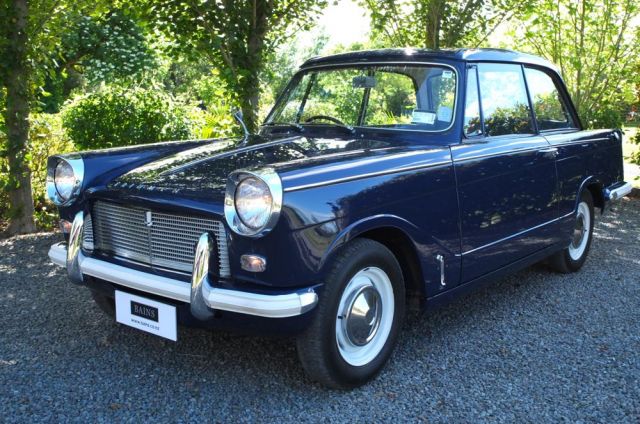
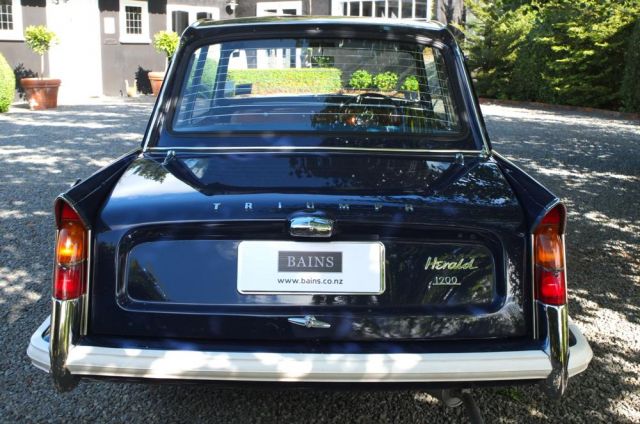
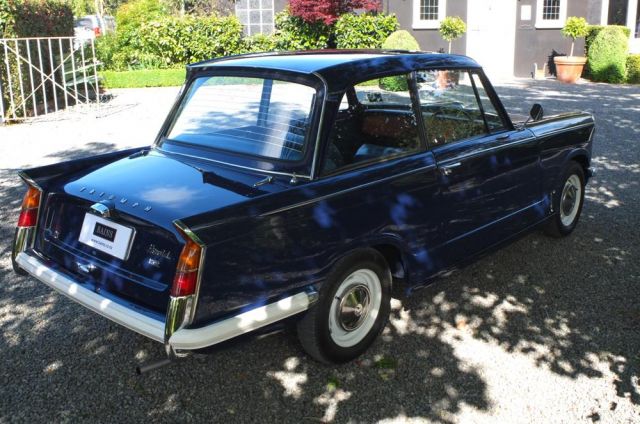

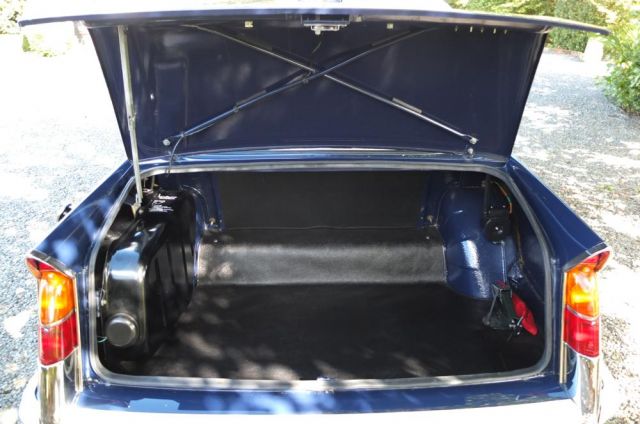
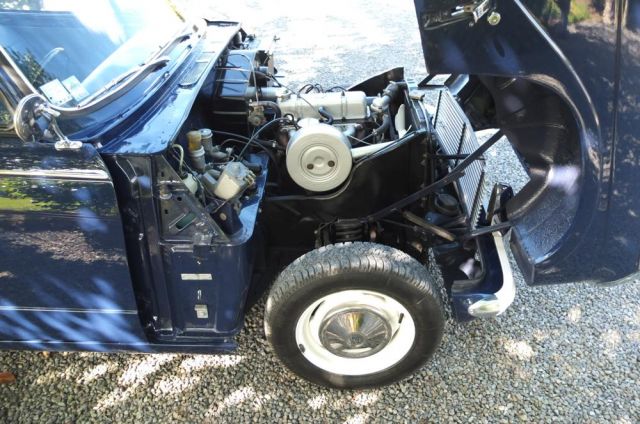

-
Thanks Nick, this is really great information. And really interesting reading about your modifications on the Triumph Owners website. I was also reading somewhere about the diff and getting the gear ratio right, another thing I hadn't considered...
-
An update on my research. I also reached out to Quantum Mechanics they have an option of a GT6 version (both 4 speed and a version with OD), he mentioned the main advantage of the GT6 gearbox was the synchro in first gear. But I thought the Vitesse Mark 2/3 already had a 4 speed synchronised gearbox? With the Vitesse 1600 that was missing the synchro in first, maybe I'm incorrect.
-
Quoted from Nick Jones
Noisy in 2nd and 3rd probably means the mainshaft tip bearing has failed, which usually spoils the mainshaft tip and often the inside of the input shaft. Weakest part of a fairly weak gearbox.
Could be rebuilt with a new mainshaft, preferably an uprated one with the bigger tip. Well worth adding overdrive. D type is fine and will be easier to find. There are various combinations of Dolomite 1850, TR7 and even Marina/Ital that can be used but some expertise is needed.
The other route is to fit a modern (ish) 5 speed. The candidates are
Ford T9. Reasonably straight forward as uses an adaptor block to mate the original gearbox with the Ford box and kits are available from various places. You really need to start with the 'box from a V6 2.8 engined car (Capri, Granada) which may be a problem in NZ? They are pretty hard to find and very expensive here now.
Toyota T50
Toyota W58
There is a NZ company who does conversions using the Toyota 'boxes
http://www.conversioncomp.com/aboutus.php
The W58 is good (I like mine) but really it's overkill for a 2L Triumph.
Nick
Hi Nick, thank you for the detailed information and the link, fantastic! It appears the NZ company uses a gearbox from a Toyota Supra which I'm sure is more than up to the job. With your Toyota five speed conversion did you find it fits well inside the cabin, similar position and how about the shift ratio - better or close to the original? Curious if it looks and feels at home in the interior. Found it noticeably quieter than traditional Triumph box? How about gearing etc... Sorry about all the questions! -
Quoted from nang
Matt,
If you're up north get hold of Ian Priestly in Taumarunui. Caddi57 on trademe. Ask a question on one of his listings,he's very helpful.
He did my 2500 box, and overdrive with new bearings for a lot less than you were quoted.
If you're down south I'm sure Terry could do the same thing.
Tony.
Hi Tony, thank you for the recommendation. May I ask, how did you find the quality of the reconditioned gearbox from Ian?
-
Quoted from re5rotary
Hi Jason where in New Zealand are you? Im in Christchurch and could rebuild your gearbox and/or fit an overdrive for you regards Terry
Hi Terry, thanks for reaching out! I'm in Te Awamutu (near Hamilton), finding someone nearby would be ideal, however willing to travel to get the job done well. Or could you supply a reconditioned gearbox or gearbox with OD to install up here?
-
Side thought: how does the OD driving experience compare to that of a traditional 5 speed?
-
Ah, thanks Richard. That makes sense. J'Type sounds to be the best version being the final iteration. Any idea on production quantities of the units? J'Type easier for parts availability down the track...











Triumph Vitesse – Fuel line shape and routing
in Engine
Posted
@Rutty The spot lights look great, form a nice line with the Vitesse headlights, compliment the car very nicely!